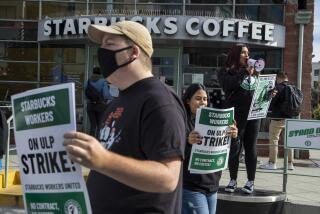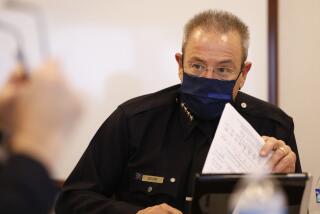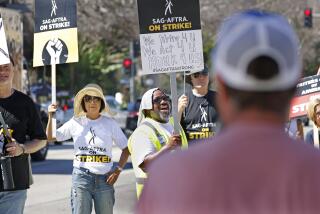High Court Says Juries Should Decide Job Bias
WASHINGTON — The Supreme Court warned judges Monday about second-guessing verdicts in discrimination cases and said that juries usually should decide whether workers have been subjected to illegal bias.
The unanimous ruling restores a verdict awarding $100,000 in damages won by a 57-year-old factory supervisor in Mississippi who was fired after his boss told him he was “too damn old to do [his] job.”
Experts in employment law said that the ruling could have a broad impact. The court opinion will apply in cases of race and sex discrimination as well as age bias, they said.
The supervisor in the case also was told that he was “so old he must have come over on the Mayflower.” Fired after 40 years on the job, the supervisor was replaced by a younger man.
Roger Reeves, the fired employee, then sued the toilet-seat manufacturer for discriminating against him because of his age. A jury heard the evidence and concluded that the company’s officials had discriminated deliberately against Reeves, and it awarded him his lost wages.
Nonetheless, the U.S. Court of Appeals in New Orleans tossed out the verdict last year in a brief opinion. It said that Reeves had failed to prove beyond all doubt that age was the reason for his firing.
The case highlighted the trend of some conservative judges to block workers from winning discrimination claims.
Since 1964, it has been illegal for employers to discriminate against workers because of their race, religion, sex or national origin. In 1967, Congress added age to the list.
Although those prohibitions are clear, actual lawsuits involving discrimination are usually not so straightforward.
Most bias suits turn on circumstantial evidence. Companies rarely, if ever, announce that they are firing a worker because of race, age or sex. Instead, officials cite other reasons.
In Reeves’ case, for example, the company said that the supervisor had failed to monitor his workers and had allowed them to come in late and leave early.
Seven years ago, the Supreme Court cast a skeptical eye on discrimination claims, stressing that workers must prove illegal bias was the main reason for their firing. Some conservative lower courts took that as a basis for aggressively rejecting bias claims.
On Monday, the high court appeared to reverse course somewhat and again made it easier for workers to win such claims.
In the case before the court (Reeves vs. Sanderson Plumbing Products, 99-536), the justices had no trouble agreeing that the fired supervisor had presented enough evidence at least to suggest that he was a victim of age bias. And in such close cases, the jurors, not a judge, should decide the outcome, the high court said.
“The Court of Appeals erred in overturning the [jury’s] verdict,” said Justice Sandra Day O’Connor. “There was sufficient evidence of age-based animus for the jury to find that [the employer] had intentionally discriminated.”
Plaintiffs need not show incriminating memos or other direct proof that an employer acted out of bias, she added.
A lawyer for the AARP said the decision gives bias victims a much better chance of winning their claims.
“This is a real boost for discrimination victims. It means employers no longer can lie about personnel decisions and get away with it,” said Thomas Osborne, the AARP lawyer.
As a general matter, companies would rather have judges decide the cases, not juries.
“Employers are scared to go before juries in these kinds of cases,” said Stephen A. Bokat, an attorney for the U.S. Chamber of Commerce.
If a judge refuses to block a trial, many companies will settle the claim, Bokat said, because they believe jurors will side with workers.
More to Read
Inside the business of entertainment
The Wide Shot brings you news, analysis and insights on everything from streaming wars to production — and what it all means for the future.
You may occasionally receive promotional content from the Los Angeles Times.











